#Cultural traditions and rituals
Explore tagged Tumblr posts
Text
Ashure: A Sweet Meal with Rich Cultural Significance
Ashure in Different CulturesThe Generosity of AshureHistorical Roots and RitualsLegend of Noah and AshureCultural Significance of AshureAshure: A Versatile DishVideo: How To Make Ashura (Noah’s Pudding)You may also like Ashure is known as Noah’s pudding or trigo koço. It is a delectable sweet pudding with its origins in the Eastern Mediterranean. This unique dish is made by combining various…
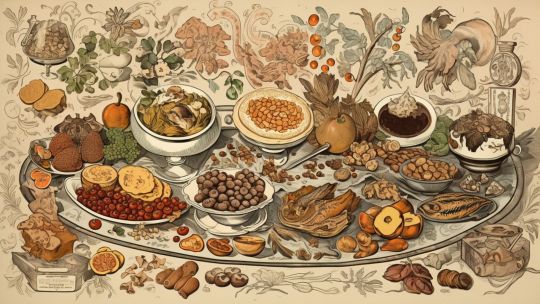
View On WordPress
#Ashure#Commemorative dishes#Cross-cultural celebrations#Cultural traditions and rituals#Eastern Mediterranean dessert#Noah&039;s pudding#Rich cultural significance#Sweet meal#Traditional recipes#Trigo koço
0 notes
Text



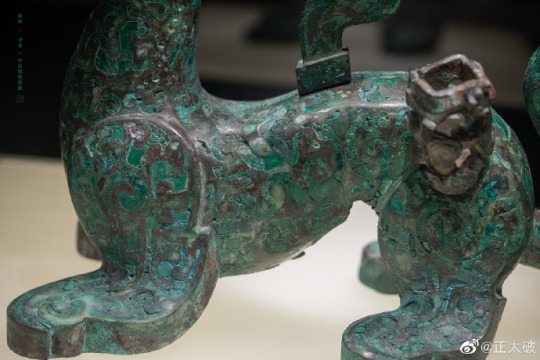
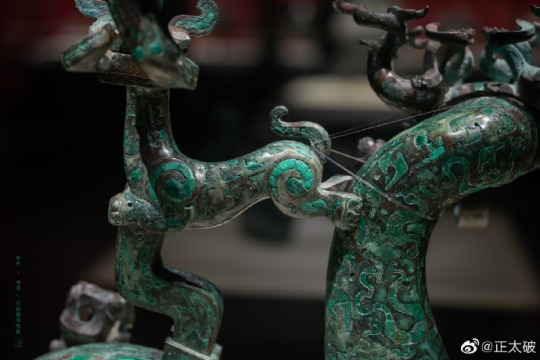

Steampunk Divine Beast From Spring And Autumn Period.
Richer in zoomorphic options than the griffin, this teasing bronze beast is actually a musical instrument bracket. Geometric and animalistic patterns are inlaid with turquoise.
Bronze of the Spring and Autumn period. In the collection of Henan Museum (河南博物院).
Photo: ©正太破
#chinese art#ancient china#chinese culture#chinese mythology#chinese history#shang bronze#bronze design#bronze art#bronze#Spring and Autumn period#shang dynasty#ritual#ancient Chinese music#traditional Chinese music#Chinese bronze#mythical creatures#fantasy creatures#magical creatures#turquoise#dragon#dragon art
264 notes
·
View notes
Text
Here’s a linocut print I made on the mikveh of Speyer.
The Mikveh of Speyer, built in 1128, is one of the oldest ritual baths in Europe, nestled within the medieval Jewish quarter of the city. This stunning stone structure featuring Romanesque architecture, preserved so well, offers a glimpse into the spiritual life of medieval Jews. with a 10-meter descent into the ground, was specifically intended to reach natural groundwater. Descending the ancient steps into the cool, still water, one can almost feel the history—the sacred rituals, the quiet prayers for purification. A visit here isn’t just a look at the past, it’s a journey into a tradition still very much alive today. A true treasure of Jewish heritage.
#mikveh#speyer#germany#history#purity#ritual#bath#jewish#jumblr#tradition#water#illustration#judaism#art#print#hebrew#jewish culture#linoprint#linocut#linocarving
50 notes
·
View notes
Text

Getting my therapy by drawing more Pre-Surak Vulcan warrior women, this time with ritual piercings and markings cause we were talking about it on a server.
Detail shot under the cut

#star trek#st art#Vulcan#pre reform vulcan#vulcan art#vulcan woman#vulcan warrior#vulcan rituals#pre-Surak Vulcan#piercings#markings#pencil sketch#traditional art#vulcan headcanons#purple enma headcanons#purpleenma#character design#curvy#Vulcan lore#Vulcan culture#vulcan women
40 notes
·
View notes
Text
The Philosophy of Shinto
Shinto, often referred to as "the way of the gods," is the indigenous spirituality of Japan. Unlike many Western religions, Shinto does not have a single founder, sacred texts, or a formalized set of doctrines. Instead, it is characterized by a reverence for nature, the worship of kami (spirits or deities), and practices that emphasize purification and rituals. Here’s an exploration of the key principles and ideas within the philosophy of Shinto:
1. Reverence for Nature
Nature as Sacred: In Shinto, nature is considered sacred and imbued with spiritual significance. Mountains, rivers, trees, rocks, and other natural features are often seen as manifestations of kami.
Harmony with Nature: Living in harmony with nature is a central tenet. This involves respecting and protecting the natural environment, recognizing it as the dwelling place of the kami.
2. Kami (Spirits or Deities)
Multiplicity of Kami: Shinto recognizes a vast number of kami, which can be spirits of natural objects, ancestors, or deified historical figures. Kami are not all-powerful gods but rather spirits with specific roles and localities.
Interconnection with Kami: The relationship between humans and kami is one of mutual respect and care. People perform rituals and offer prayers to kami to seek their blessings, protection, and guidance.
3. Ritual Purification
Purification Practices: Purification, or misogi, is a fundamental aspect of Shinto. It involves cleansing oneself of impurities and pollutants to maintain spiritual and physical purity. This can be done through washing, rituals, or even symbolic acts.
Rituals and Festivals: Shinto rituals and festivals (matsuri) are numerous and diverse, often held at shrines dedicated to various kami. These ceremonies reinforce the connection between the community and the kami, celebrating seasonal changes, agricultural cycles, and significant life events.
4. Shrines and Sacred Spaces
Shinto Shrines: Shrines, or jinja, are the focal points of Shinto worship. They are considered the homes of the kami and are places where people can go to offer prayers, perform rituals, and seek blessings.
Torii Gates: The iconic torii gates mark the entrance to sacred spaces, symbolizing the transition from the mundane to the sacred. Passing through a torii gate signifies entering a space where the kami dwell.
5. Ancestral Worship
Respect for Ancestors: Ancestral worship is an important component of Shinto. Families honor their ancestors through rituals and offerings, believing that deceased family members continue to influence and protect the living.
Continuity and Connection: This practice underscores the continuity of life and the interconnectedness of generations. Ancestors are seen as integral to the family's ongoing spiritual wellbeing.
6. Syncretism with Other Beliefs
Integration with Buddhism: Shinto has historically coexisted and intertwined with Buddhism in Japan. Many Japanese people practice both religions, incorporating elements of each into their daily lives and rituals.
Adaptability: Shinto’s flexibility and lack of rigid doctrines allow it to integrate other spiritual and philosophical traditions, adapting to the evolving cultural landscape.
The philosophy of Shinto offers a unique perspective on spirituality that is deeply intertwined with nature, community, and the reverence for life’s sacred aspects. It emphasizes living in harmony with the natural world, maintaining purity through rituals, honoring the kami and ancestors, and celebrating the cyclical nature of life. Shinto’s adaptability and integration with other traditions highlight its enduring relevance in contemporary Japanese culture.
#philosophy#epistemology#knowledge#learning#education#chatgpt#Shinto#Philosophy Of Shinto#Kami#Nature Worship#Ritual Purification#Shinto Shrines#Ancestral Worship#Japanese Spirituality#Torii Gates#Misogi#Matsuri#Spiritual Traditions#Indigenous Beliefs#Syncretism#Cultural Heritage
8 notes
·
View notes
Text
In the village in the Ramtops where they understand what the Morris dance is all about, they dance it just once, at dawn, on the first day of spring. They don't dance it after that, all through the summer. After all, what would be the point? What use would it be?
But on a certain day when the nights are drawing in, the dancers leave work early and take, from attics and cupboards, the other costume, the black one, and the other bells. And they go by separate ways to a valley among the leafless trees. They don't speak. There is no music. It's very hard to imagine what kind there could be.
The bells don't ring. They're made of octiron, a magic metal. But they're not, precisely, silent bells. Silence is merely the absence of noise. They make the opposite of noise, a sort of heavily textured silence.
And in the cold afternoon, as the light drains from the sky, among the frosty leave and in the damp air, they dance the other Morris. Because of the balance of things.
You've got to dance both, they say. Otherwise you can't dance either.
Terry Pratchett, Reaper Man*
*special request from @asmuchasidliketo, who wanted the unabridged account of the other Morris dance.
#dancers#ramtops#reaper man#discworld#terry pratchett#magic#dance#silence#music#the other bells#traditions#culture#seasons#spring#winter#mystery#rituals#ceremony#you've got to dance both#a heavily textured silence#long quote#quote request
330 notes
·
View notes
Text

Conjure canes in the United States are decorated with specific objects to conjure specific results and conjure spirits. This practice was brought to the United States during the transatlantic slave trade from Central Africa. Several conjure canes are used today in some African American families. In Central Africa among the Bantu-Kongo, banganga ritual healers use ritual staffs.
These ritual staffs are called conjure canes in Hoodoo which conjure spirits and heal people. The banganga healers in Central Africa became the conjure doctors and herbal healers in African American communities in the United States. The Harn Museum of Art at the University of Florida collaborated with other world museums to compare African American conjure canes with ritual staffs from Central Africa and found similarities between the two, and other aspects of African American culture that originated from Bantu-Kongo people.

#african#afrakan#kemetic dreams#africans#brownskin#afrakans#brown skin#african culture#afrakan spirituality#central africa#harn museum of art#african american#banganga#kongo#ritual#conjure cane#hoodoo#vodun#voodoo#african traditional religions
23 notes
·
View notes
Text
you guys gotta learn to be a lot cooler about religions that aren't your own
and yes. that does include christianity.
#eli talks#And I Mean It.#the priority obviously is to get cooler about islam and judaism and all. like the religions that get oppressed?#but that firsthand and secondhand religious trauma is making a lot of people very not cool anymore#it makes a lot of people kind of. assholes. even.#white ppl who grew up baptist or catholic or mormon or whatever else that are now athiests will like#talk about how evil religion is. how toxic. how controlling. only really meaning christianity.#bc that's the only religion that really exists to them. as ex-christians.#they ignore the way various black and indigenous ppl have fused their traditions and customs with christianity to survive#they ignore the positive teachings of christianity like charity and reserving judgement and kindness and patience#they ignore the positive elements of religious organization like community-building. fund-raising. finding meaning.#and it's ok to have religious trauma. sucks that it happened. but there's nothing wrong with you being traumatized.#can you for the love of god stop making that everyone else's problem though?#like . can you be normal about how other people choose to interact with the world?#can you be normal about the culture other people practice? the foods they eat? clothes they wear? rituals they perform?#can you like. not try to trick a jewish person into eating pork? can you not ban hijab?#can you just clench your teeth and not say anything mean to someone praying before a meal?#can you keep your comments to yourself when someone says they are going to pray for your hardships to lessen?#when an indigenous person mentions a ceremony they did or a practice they do. can you not call it mumbo jumbo? maybe?#can you abstain from calling a catholic creepy for the ash on their forehead?#idk. i feel a certain way about this.
8 notes
·
View notes
Note
im not sure what we're really expecting from the show at this point with all the human only mandos, the talk of mandalorian "bloodlines," no mention of the resol'nare, and no mando'a. it's just neat armor and neat scenarios. i guess that's all it has to be, but i gotta confess i for one feel cheated
the things we could've had

i thank @/hellikait on Twitter for this. Idk what canon is, this was what happened in s3 to me :')
#Anonymous#like the gai bal manda was literally RIGHT THERE#what's so hard about using it we all know Mando'a is canon in Disney!Star Wars now?#the Armorer used it.Sabine used it. so why cant Din???#it's insane cos they made the Armorer someone who upheld the old Mandalorian culture and traditions#and yet they didn't let her use Mando'a in these important rituals#really baffled me i gotta say o(-(#and i'm not even someone who's well versed in Mando stuff i only read Wookieepedia and other mando blogs for fun lmao#yapping in hyperspace
95 notes
·
View notes
Text

At last, After our home attain'd, we turn'd, and lo! With festal fires the hills were lit! Thine eve Saint John, had come once more, and for thy sake As though but yesterday thy crown were worn, Amid their ruinous realm uncomforted The Irish people triumph'd. Gloomy lay The intermediate space; - thence brightlier burn'd The circling fires beyond it. 'Lo!' Said I, Man's life as view'd by Ireland's sons; a vale With many a pitfall throng'd, and shade, and briar, Yet overblown by angel-haunted airs, And by the Light Eternal girdled round.
Aubrey Thomas de Vere, The Sisters (1861)
June 24th is St John's Day.
Saint John's Eve, starting at sunset on 23 June, is the eve of celebration before the Feast Day of Saint John the Baptist. The Gospel of Luke (Luke 1:26–37, 56–57) states that John was born six months before Jesus; therefore, the feast of John the Baptist was fixed on 24 June, six months before Christmas according to the old Roman calculation. This feast day is one of the very few saints' days which commemorates the anniversary of the birth, rather than the death, of the saint being honoured. The Feast of Saint John closely coincides with the June solstice, also referred to as Midsummer in the Northern Hemisphere. The Christian holy day is fixed at 24 June; but in most countries festivities are mostly held the night before, on Saint John's Eve. This holiday is celebrated in many places.
In England and Ireland there is a tradition to jump over a bonfire holding hands with your lover. Your love will last all year. Save the ash from your fire. It will protect crops from lightening storms.
Across many parts of Europe they celebrate St. John’s day with bonfires.
In France, the "Fête de la Saint-Jean" (feast of St John), traditionally celebrated with bonfires (le feu de la Saint-Jean) that are reminiscent of Midsummer's pagan rituals, is a Catholic festivity in celebration of Saint John the Baptist. It takes place on June 24, on Midsummer day (St John's day). Nowadays it is seldom celebrated. In certain French towns, a tall bonfire is built by the inhabitants in order to be lit on St John's Day. In the Vosges region and in the Southern part of Meurthe-et-Moselle, this huge bonfire is named "chavande".
In Norway, as elsewhere in Scandinavian countries, this event is celebrated with a communal bonfire. The event is also known as Jonsok, meaning ‘wake of Saint John’.
#de vere#quote#poem#st john's day#feast of st john#summer solstice#christian#pagan#ritual#tradition#custom#heritage#europe#culture
43 notes
·
View notes
Text
Knotting the Banner by David J. Mozina
Academic research unfolding within a living biographical narrative.
This impressive book combines the virtues of ethno-cultural and religious study and adventure novel. In the context of everyday Hunan, the reader discovers a world permeated with cosmogonic meanings: it’s like a Rabbit Hole into Taoist thinking. A complicated mystic quest takes place right in the rural daily routine.
David J. Mozina explores the topic of Banner Rites focused on worship of the Lord Yin Jiao (殷郊 aka 殷交), the principal of the sixty Tai Sui (太歲). The fierce celestial Tai Sui is a much revered guardian deity in Taoist exorcism.
An essential book for the connoisseurs of authentic experiences.
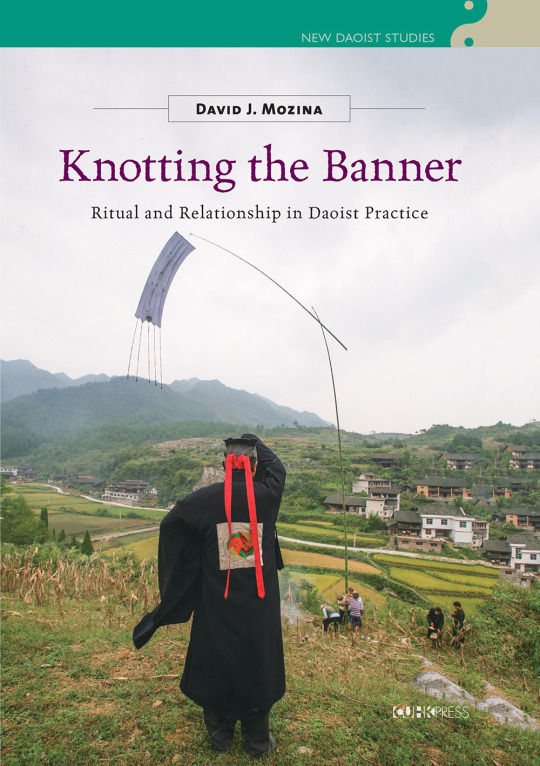
Mozina, D. J. (2021). Knotting the Banner: Ritual and Relationship in Daoist Practice. University of Hawaii Press.
#book boost#book recommendations#book#taoism#taoist sorcery#taoist deities#chinese culture#chinese mythology#taoist magic#taoist#chinese traditions#reading#ancient china#daoism#taoist ritual#taoist immortal#daoist#inner alchemy#neijia#taoist spell#fu talisman#thunder rites#雷法
42 notes
·
View notes
Text
🩸🩸🩸TOLERANCE & ACCEPTANCE IS THE NEW NORMAL… SOON NEAR YOU🪦🪦🪦
❌❌❌
#culture#acceptance#tolerance#traditions#barbarism#stupidity#oculists#cabala#satanic rituals#islam#violence#mind control#submission#self hatred#misery#anger#self destructive#end bloody traditions#truth#standup#speak up#please share#wwg1wga
6 notes
·
View notes
Text



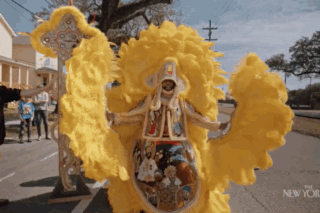


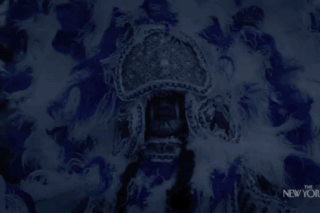
All on a Mardi Gras Day
#Mardi Gras Indians#Mardi Gras#Fat Tuesday#New Orleans#Black American#Black American culture#Black American tradition#Black American ritual#Black Americans#Black Native Americans
31 notes
·
View notes
Text
🐺✨
#I have to evaporate when people are like nooo vegoons go against traditions by not eating animalssss#and I’m sitting here like if u cared so much about honoring traditions you would not be discoursing about cannibalism being problematic#I was pro cannibalism when I was like. 12. my ancestors practiced it and it was morally consistent with what I believed at the time#my lore deepens further#do not hold the ritual cannibalism accusations against me I am a changed wolf#ven talks#anyway I can practice my culture however I want pendejo leave me alone blue eyed devils
2 notes
·
View notes
Text
Patti Smith on art, music and the spirit of punk: “you look at like Jesus saying, ‘Okay, all you have to do, basically, people, is love one another, and everything will build on that.’ But then you have everyone coming after him that says, 'Okay, you have to love one another, and here are these 40 other rules’”
youtube
Patti Smith: “For me, it’s not about tradition at all; it’s about rules and regulations. I like history; I like certain traditions; I like certain rituals, but as soon as they’re encased in rules and regulations, they become inclusive. I mean, you look at like Jesus saying, 'Okay, all you have to do, basically, people, is love one another, and everything will build on that.’ But then you have everyone coming after him that says, 'Okay, you have to love one another, and here are these 40 other rules, and then these rules and these rules, and you know you have to then be this aspect. You can’t be Protestant, or you can’t be Catholic, or you can’t be just non-denominational. As long as you pray and love, you have to be in this religion; you have to wear these clothes; you have to do'…
It’s all the rules and regulations that come with anything, with going to school, with everything we do. Even movements, great movements, important movements that make change, they get like eventually like clubs, and then all they care about is their special interest.
And I think it’s the rules—these rules and regulations—that constantly we’re fighting and trying to shed. And if that makes me, you know, less moral and my less moral because I refuse to have an organized religion, I don’t feel that at all because I feel completely unfettered. My relationship with God is unfettered by a bunch of rules and regulations about how to get to Him. And I think that, you know, is the real key, is just to be a good person. If you’re just a good person, you know, I don’t care what side of the, you know, what you know. Everybody can keep their values, keep their traditions, but you know, as Lennie said, 'live in harmony.’
I don’t think that all arts should talk to everybody. Robert Mapplethorpe didn’t feel like his x-rated photographs or his sadomasochistic photographs were for everyone. They weren’t for his mother; they weren’t for young people or children. They were for specific people. A lot of people look at a Jackson Pollock; it makes them ill, but they will love a Vermeer. You know, I don’t think that everything has to be for everybody. Some people might never like Allen Ginsberg’s poems; that’s okay. They’ll like maybe Wordsworth. You know, we have a whole spectrum and a whole, you know, all of the possibilities to enter the creative sphere and define, you know, where we relate to this expansive consciousness. And it could be through, you know, Whistler or it could be, you know, through Wagner. And it’s just, you know, I think that, you know, it doesn’t have to just be through something new or something, you know, I don’t like all new art. In fact, I can’t stand most contemporary art. You can take all of Jeff Koons and throw them into—I don’t even know; you could bury him in the Hawaiian crater.”
Other speaker: - It’s called the “shlok of the news.”
Patti Smith: “I’m just saying that it’s just, for those like Jesus said, 'those who will hear will hear, and those who will see will see.’
I would have been very happy though we were never in the mainstream. Even when we had one successful song, it was on such a controversial album that, you know, we managed always to stay, like, in the illuminated underground. I would have loved if we could have written a song on Horses, that I used to call it my dream of writing the hit of the world—writing a song that everybody heard and was like felt uplifted by it. Everybody; it was like, you know, the perfect top song, you know, 'Reach Out For Me’ or something, to write one like that. But I don’t have that gift. You know, it’s a gift that Smokey Robinson had or various people have, but I don’t have that particular gift. And I don’t say that like being humble; it’s just a truth. I mean, if I had it, I’d have written the hit of the world. I don’t think it’s important to stay in the underground to be an artist. I would love to see the greatest artists that ever lived suddenly beloved by the whole world.
You know, but, so, you know, you just, we just keep doing our work. You know, it’s like we never cared whether we were even though I had that secret dream. We didn’t do our work to, you know, make money or to be pop stars or dress in a certain way. We got in trouble at least once a week. Everything that we were asked to do, we usually did the opposite—not to be contrary just because that’s the way we were going. We were like, 'No, I’m not going to brush my hair for the cover of 'Horses.’ I’m not going to, like, no, I’m not going to wear a dress on the cover of this album. No, I’m not going to take the word 'pissing’ out of 'Pissing in the River.’ Always, always, oh, no, I’m not going to call it, you know, 'rock and roll potato’ instead of 'rock and roll.’ I’m gonna, you know, no, I’m not going to shave my armpits.’ I mean, it was like the stupidest fights every single—everything we did was a fight, right? But we were, like, we were happy to fight. I mean, Jesus Christ, you know, to be a young person, I knew if you’re going to be a poet or an artist or anything like this, a troubadour, you were going to suffer. You’re probably going to be poor; you were gonna maybe have TB (tuberculosis). I mean, anything that’s going to happen, but you were going to, you know, be blessed with the opportunity to create in this manner and unfettered by, you know, the world’s expectations and demands. You were just going to do your work, and that’s what we did.”
Other speaker: “And I would have to say that that is a legacy that we got from the counterculture of the 1960s—the sense of idealism, the sense of possibility that you could choose your own path, and if it was rocky, well, that’s, you know, that’s rolly. I mean.”
(Patti Smith discusses art, music and the spirit of punk as protest at the Nexus Institute’s Symposium 'An Education in Counterculture’ in May 2018.)
#art#music#artist#patti smith#singer#love#history#jesus#tradition#culture#religion#rituals#rules#people#church#life#Youtube
2 notes
·
View notes
Photo

Ethiopia, wedding ceremony by Dietmar Temps
#ethiopia#äthiopien#africa#afrika#afrique#tribal#tribes#tribe#people#nomadic#faces#portrait#journey#body#painting#scars#scarification#eastafrica#adventure#southomo#omoriver#loweromovalley#ethnic#ethnology#ethnie#culture#tradition#traditional#ritual#korcho
5 notes
·
View notes